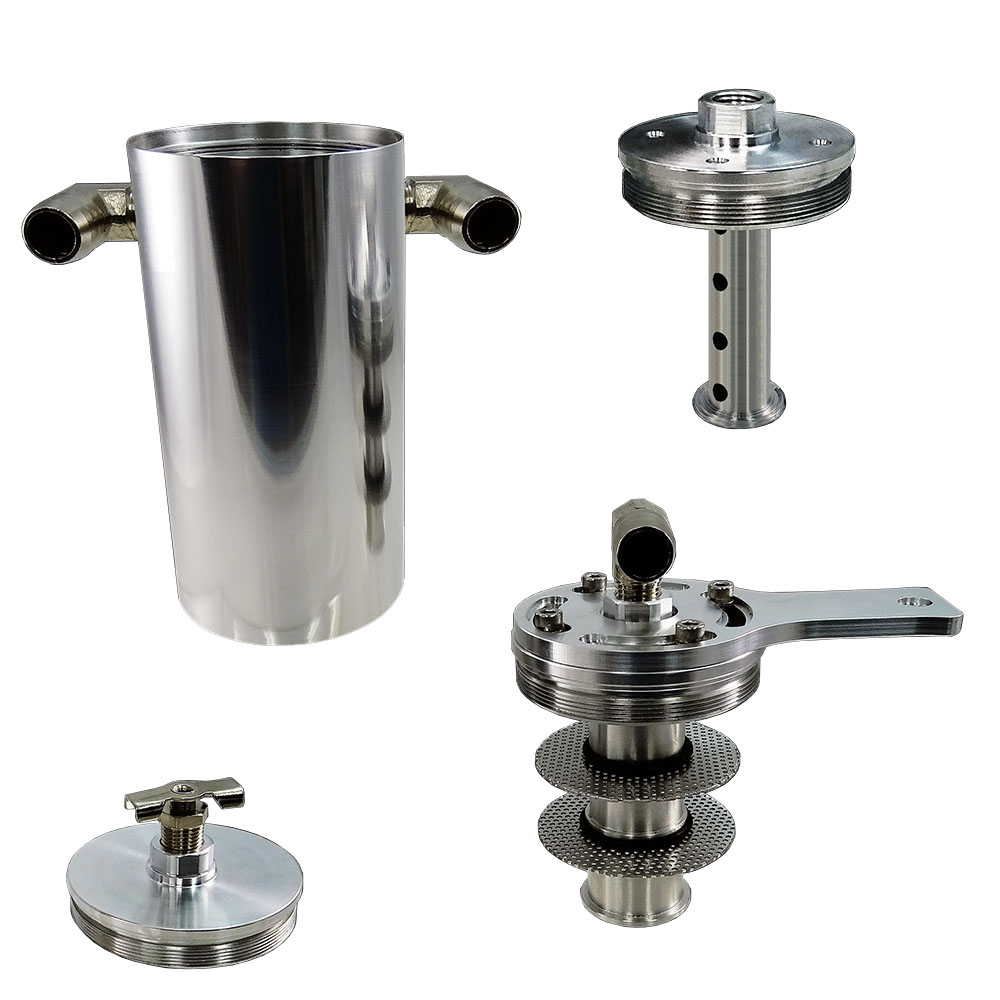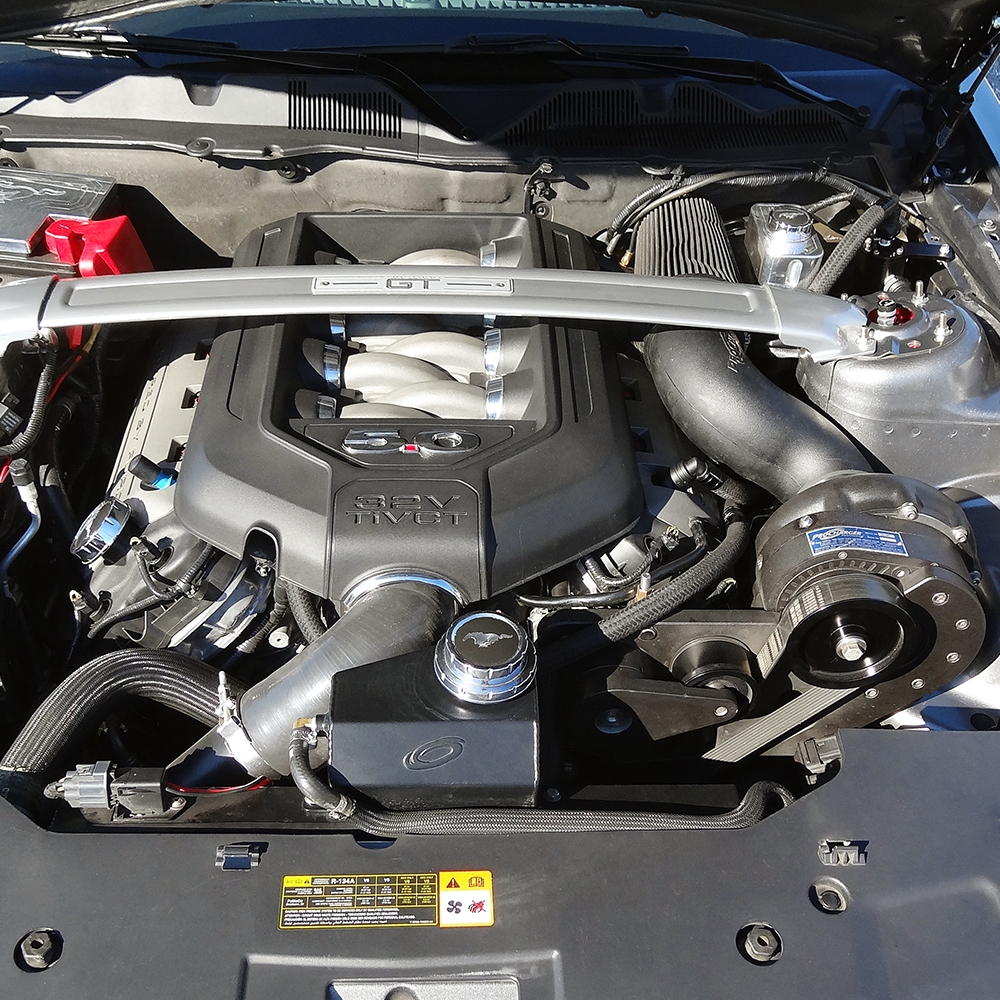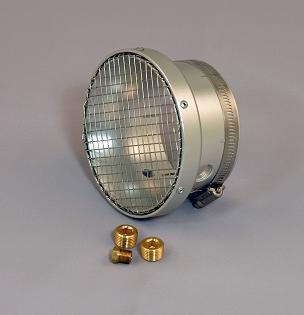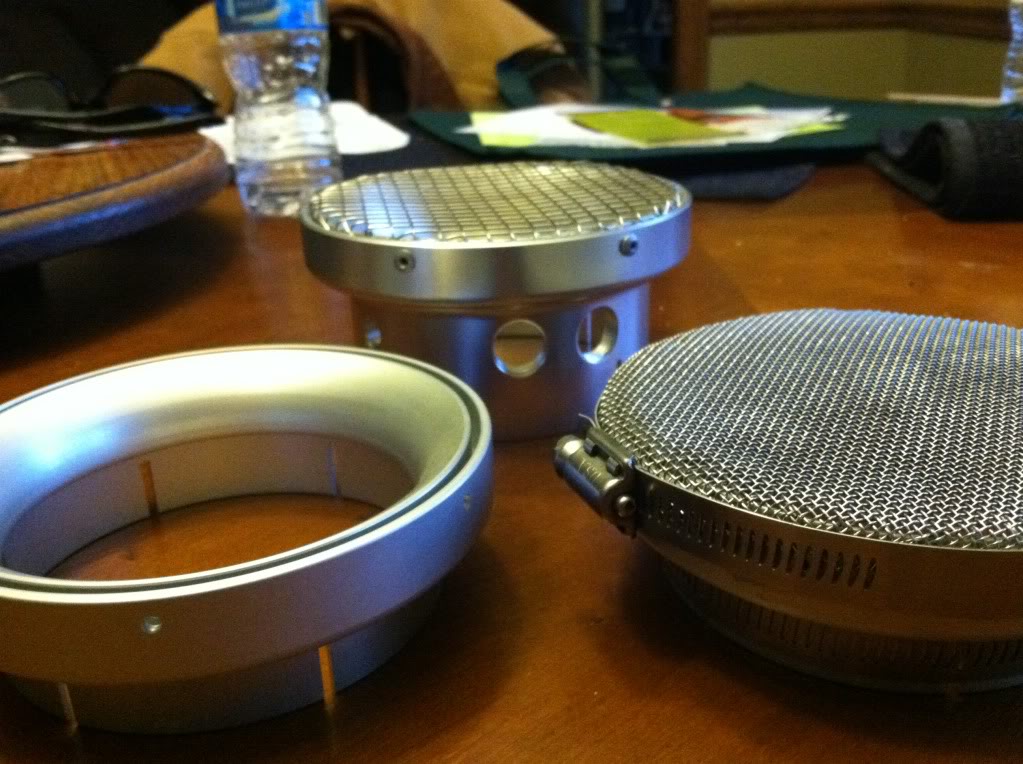Upr Dual Valve Catch Can For Boosted Coyotes
#1
As a consumer, I prefer to hear tangible results from end-users. I don't like to do the whole info-mercial deal. So for this new product release, I'll tell you what's new with my personal car.
We had a little spare time while I was at the shop this week so we checked the contents of my UPR catch can. It was a previous generation design, but it was still full of oil and contaminants (7oz) after roughly 2,000 miles of street driving so it was working well. However, UPR has developed two newer generations of catch cans since I installed that can, so we went ahead and upgraded to the latest design.
My boss Joe has been obsessing over catch cans for the past year or two. He has studied countless different designs, fabricated many different style cans, and tested multiple cans on dozens of different vehicles. I doubt anyone has put in the same amount of Research & Development which Joe has invested into catch can design for UPR Products. His latest design is absolutely state of the art, and superior to any other can on the market. This is our "Dual Valve" design with four chambers. When you actually look inside other cans on the market, it is immediately apparent that there is nothing out there with a sophisticated design like ours:

In addition to the four chamber design (shown above) which is extremely effective at trapping oil vapor, the new dual valve configuration allows it to draw from two vacuum sources. This is particularly relevant for boosted applications, like my ProCharged 2011 5.0. With this new can, we are able to use the blower inlet tube AND the intake manifold (with a check valve) as sources of vacuum. The intake manifold port offers a very strong vacuum source for the can until the engine is under boost. At that time, the check valve closes off the line and the can is able to draw a strong amount of vacuum from the supercharger inlet tube.
Following preliminary testing on my car, I have noticed more consistent vacuum on the boost gauge, which has aided part throttle drivability. At a 70mph cruise the engine sees 12lbs of vacuum, which is more than the previous level of 11lbs. Additionally, averaging my fuel economy over the 110 mile trip to work (each direction), the new can increased fuel economy by .4 MPGs. I talked to Joe after testing the new UPR Dual Valve Catch Can, and I expressed my disbelief at the improvement in drivability. His response was interesting. "Why do you think the automobile manufacturers invest in these PCV systems? It isn't for EPA regulations. An effective PCV system improves cylinder seal and aids part-throttle drivability. The only downside is the oil vapor which is ingested by the engine, but our catch cans remedy that problem!"
I have to say, I'm am genuinely impressed. I strongly recommend this can for any boosted application. The car runs smoother with the dual valve can, and it has already proven to capture more oil vapor than our previous cans and our competitors' cans in A-B testing which we've performed over the past year.
Here's how the system looks on my car:

And here's a link to the dual valve catch can on UPR's web site:
http://www.uprproducts.com/mustang-b...ged-gt-11.html
We had a little spare time while I was at the shop this week so we checked the contents of my UPR catch can. It was a previous generation design, but it was still full of oil and contaminants (7oz) after roughly 2,000 miles of street driving so it was working well. However, UPR has developed two newer generations of catch cans since I installed that can, so we went ahead and upgraded to the latest design.
My boss Joe has been obsessing over catch cans for the past year or two. He has studied countless different designs, fabricated many different style cans, and tested multiple cans on dozens of different vehicles. I doubt anyone has put in the same amount of Research & Development which Joe has invested into catch can design for UPR Products. His latest design is absolutely state of the art, and superior to any other can on the market. This is our "Dual Valve" design with four chambers. When you actually look inside other cans on the market, it is immediately apparent that there is nothing out there with a sophisticated design like ours:

In addition to the four chamber design (shown above) which is extremely effective at trapping oil vapor, the new dual valve configuration allows it to draw from two vacuum sources. This is particularly relevant for boosted applications, like my ProCharged 2011 5.0. With this new can, we are able to use the blower inlet tube AND the intake manifold (with a check valve) as sources of vacuum. The intake manifold port offers a very strong vacuum source for the can until the engine is under boost. At that time, the check valve closes off the line and the can is able to draw a strong amount of vacuum from the supercharger inlet tube.
Following preliminary testing on my car, I have noticed more consistent vacuum on the boost gauge, which has aided part throttle drivability. At a 70mph cruise the engine sees 12lbs of vacuum, which is more than the previous level of 11lbs. Additionally, averaging my fuel economy over the 110 mile trip to work (each direction), the new can increased fuel economy by .4 MPGs. I talked to Joe after testing the new UPR Dual Valve Catch Can, and I expressed my disbelief at the improvement in drivability. His response was interesting. "Why do you think the automobile manufacturers invest in these PCV systems? It isn't for EPA regulations. An effective PCV system improves cylinder seal and aids part-throttle drivability. The only downside is the oil vapor which is ingested by the engine, but our catch cans remedy that problem!"
I have to say, I'm am genuinely impressed. I strongly recommend this can for any boosted application. The car runs smoother with the dual valve can, and it has already proven to capture more oil vapor than our previous cans and our competitors' cans in A-B testing which we've performed over the past year.
Here's how the system looks on my car:

And here's a link to the dual valve catch can on UPR's web site:
http://www.uprproducts.com/mustang-b...ged-gt-11.html
Last edited by UPRSharad; 02-01-2015 at 09:57 AM.
#2
I don't quite get the point of the 4-chamber thing. The 2 check valve thing sounds fine for most applications (not so much turbo as there usually isn't a secondary vacuum source as the air filter is directly attached to the cold side if at all, but that's another issue I'd like to hear an option for). It looks to me like one side goes to the outside and through 3 layers of maybe 20% open mesh metal screen and down into the main chamber, the other side goes into the central tube and (hopefully) most of it goes out into the steel wool and then down through the drilled plate into the central chamber and some goes straight down the central tube through 1 drilled hole into the central chamber... is that the summary of the flow in the can?
And the overall flow out side of the catch can is from the crankcase (1 or 2 sides) to the catch can, and then from the catch can to a split between the intake manifold and the pre-blower intake pipe?
And the overall flow out side of the catch can is from the crankcase (1 or 2 sides) to the catch can, and then from the catch can to a split between the intake manifold and the pre-blower intake pipe?
#3
I don't quite get the point of the 4-chamber thing. The 2 check valve thing sounds fine for most applications (not so much turbo as there usually isn't a secondary vacuum source as the air filter is directly attached to the cold side if at all, but that's another issue I'd like to hear an option for). It looks to me like one side goes to the outside and through 3 layers of maybe 20% open mesh metal screen and down into the main chamber, the other side goes into the central tube and (hopefully) most of it goes out into the steel wool and then down through the drilled plate into the central chamber and some goes straight down the central tube through 1 drilled hole into the central chamber... is that the summary of the flow in the can?
And the overall flow out side of the catch can is from the crankcase (1 or 2 sides) to the catch can, and then from the catch can to a split between the intake manifold and the pre-blower intake pipe?
And the overall flow out side of the catch can is from the crankcase (1 or 2 sides) to the catch can, and then from the catch can to a split between the intake manifold and the pre-blower intake pipe?

Just a quick heads up on how the systems get setup on any turbo or supercharged systems cold side with or without filters. Theses systems are so new and changing the game by being mounted in the lip of the cold side when there is no filter and in the tube or filter when present. The vacuum they create at WOT is strong enough to properly evacuate the the crankcase and provide additional ring seal and eliminate as much positive pressure as possible.
The multiple chambers are to provide different stages of coalescing for the oil separation process to force the vapors / mist to collect together and then cool slightly, allowing them to condense more as gravity will pulls them out of the air-stream. The high flow stainless steel screens are woven by a filter company to ensure proper contact and performance while maintaining flow with little to no restriction. Then after the oil passes through the diffuser tube and diffuser screen it splashes around and has to drip down the diffuser tube shield and then further coalesce at the bottom of the diffuser tube and diffuser shield.
The 3 diffuser shield screens are in the exit path of the clean air that goes back into the engine or WOT during Wide Open Throttle. They are there to add an additional set of layers to further prevent and stop the remaining oil / vapor from getting out of the system and they too collect and force oil to drip down from them.
The UPR Dual Valve Catch Can has 3 Plug n Play connections on it and 1 is for the primary vacuum from the intake manifold during normal driving which is absolutely necessary for the best performance. The next line is the main line off the driver side valve cover which is where the most exit pressure is on boosted Fords. You also cap the passenger side valve cover PCV off to increase the systems efficiency and increase the vacuum to the driver side. The primary vacuum line has a check valve in it to close and stop boost from pressurizing the crankcase in the reverse direction of the blow-by you get from the pistons to eliminate air lock in the crankcase.
Once the check valve closes the WOT line is what gives the UPR Dual Valve Catch Can system it's vacuum to maintain proper PCV function and crankcase evacuation, further helping ring seal and performance. This is what we have been testing for the past few years and having incredible results with these designs. The multiple stages / chamber are a result of a lot of testing and fighting to gain control of the oil and finally develop a system that works like it's supposed to.
Here is a a picture of the actual UPR Dual Valve Catch Cans which will let you see what the first picture was missing.

Thanks for the questions, I like the fact that you have a decent understanding of the systems function as well.
Hope this helped.
Joe Mainiero / UPR Owner
UPR 11-15 Mustang Dual Valve Catch Can System
Last edited by UPR Products; 02-01-2015 at 10:07 AM.
#4
I don't quite get the point of the 4-chamber thing. The 2 check valve thing sounds fine for most applications (not so much turbo as there usually isn't a secondary vacuum source as the air filter is directly attached to the cold side if at all, but that's another issue I'd like to hear an option for). It looks to me like one side goes to the outside and through 3 layers of maybe 20% open mesh metal screen and down into the main chamber, the other side goes into the central tube and (hopefully) most of it goes out into the steel wool and then down through the drilled plate into the central chamber and some goes straight down the central tube through 1 drilled hole into the central chamber... is that the summary of the flow in the can?
And the overall flow out side of the catch can is from the crankcase (1 or 2 sides) to the catch can, and then from the catch can to a split between the intake manifold and the pre-blower intake pipe?
And the overall flow out side of the catch can is from the crankcase (1 or 2 sides) to the catch can, and then from the catch can to a split between the intake manifold and the pre-blower intake pipe?


#5
This is interesting, but what about vented cans? I currently run breathers on my 4.6 with the whipple s/c.
I had a JLT catch can, and the amount of blow-by back into the TB was insane... made me switch to breathers.. As for the smell? It smells fine to me
I had a JLT catch can, and the amount of blow-by back into the TB was insane... made me switch to breathers.. As for the smell? It smells fine to me

#6
This is a problem with that Catch Can design in particular. Catch Cans with a side by side in and out ports allow the majority of the oil to pass right through them. This is well known and the can you are referring to in particular suffers from this the most. But there is a reason we changed our systems to the new system after experiencing this with our older design which was a much better design that the one you are speaking of.
The nature of oil separation and the excessive heat and high vacuum levels that are presented have clearly pointed out why a side by side can is called a pull through catch can. I could absolutely guarantee that our system will deliver the performance you expect and for which it's intended to do. " Positive Oil Control "
The biggest problem is the System you removed is there is no where for the oil to be able to coalesce or condense properly as well as there is no real barriers or chambers to allow any of these processes. Venting the breathers completely eliminates any vacuum that is vital to better ring seal and overall drive-ability.
Running the proper setup will change your beliefs all together on breathers other than they are a band aid. Post some pictures of your setup and I can explain how the system for your particular engine combo can be setup to make it much more enjoyable and responsive setup.
Just a quick explanation.
The nature of oil separation and the excessive heat and high vacuum levels that are presented have clearly pointed out why a side by side can is called a pull through catch can. I could absolutely guarantee that our system will deliver the performance you expect and for which it's intended to do. " Positive Oil Control "
The biggest problem is the System you removed is there is no where for the oil to be able to coalesce or condense properly as well as there is no real barriers or chambers to allow any of these processes. Venting the breathers completely eliminates any vacuum that is vital to better ring seal and overall drive-ability.
Running the proper setup will change your beliefs all together on breathers other than they are a band aid. Post some pictures of your setup and I can explain how the system for your particular engine combo can be setup to make it much more enjoyable and responsive setup.
Just a quick explanation.
#7
Breathers did nothing for me except blow oil out the front seal and anywhere else it could escape. On a 3v the PCV valve does not stay open under boost and builds up enormous pressure in crankcase. Went back to a proper catch can set up and problem solved - butt dyno showed power increase too.
#9
Here's the thing, the PCV wasnt removed when placing a breather on the DS head, so in effect, nothing really changed? The PS head is an open circut anyway, to the "ambient" air in the air inlet tube....
So really, what is iit doing to the car? There is so much back and forth on this in regards to ring seals etc...
So really, what is iit doing to the car? There is so much back and forth on this in regards to ring seals etc...
#10
Here's the thing, the PCV wasnt removed when placing a breather on the DS head, so in effect, nothing really changed? The PS head is an open circut anyway, to the "ambient" air in the air inlet tube....
So really, what is iit doing to the car? There is so much back and forth on this in regards to ring seals etc...
So really, what is iit doing to the car? There is so much back and forth on this in regards to ring seals etc...
Thread
Thread Starter
Forum
Replies
Last Post
jwog666
Pipes, Boost & Juice
11
12-27-2021 08:09 PM
Matt's 95 Stang
5.0L (1979-1995) Mustang
2
10-05-2015 07:16 AM
Boostaddict
Lethal Performance
0
10-01-2015 08:58 AM
Boostaddict
3.7L V6 S550 Tech 2015 - 2017
0
10-01-2015 08:57 AM


